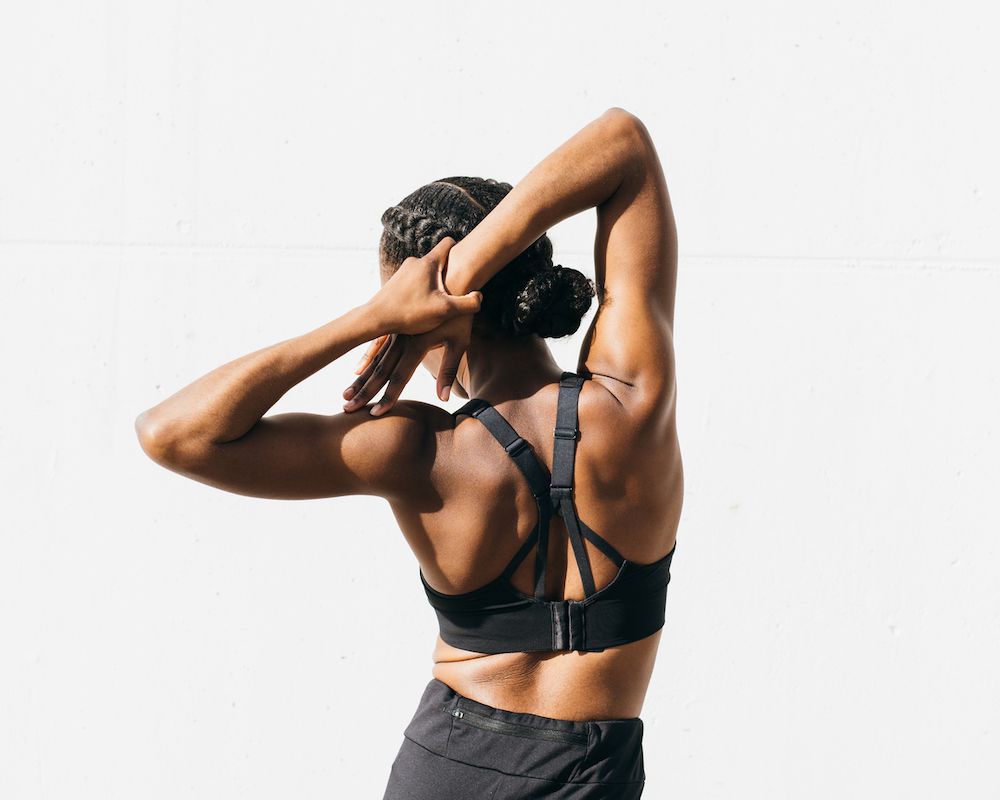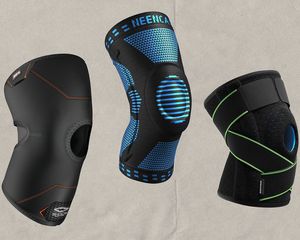
Stocksy
When you finish a challenging workout, you usually expect to wake up with some muscle soreness the next morning. It's a natural part of the recovery process, and soreness (in most cases) just means that your muscles are working exactly as they should be—and getting stronger, at that. But if you've ever finished an intense weight lifting session or tried a new workout modality only to wake up without an ounce of muscle soreness, you might question whether or not you challenged yourself enough during your workout. If you worked hard, you should be sore, right? To get to the bottom of this perplexing fitness phenomenon, we've tapped sports medicine physician Dr. Michael Medvecky and physical therapist Dr. Bohdanna Zazulak.
Meet the Expert
- Dr. Michael Medvecky is a Yale Medicine sports medicine physician and orthopaedic surgeon.
- Dr. Bohdanna Zazulak DPT is a physical therapist, orthopedic certified specialist, and researcher at Yale School of Medicine.
Why Do You Get Sore After a Workout?
Post-workout pain in the form of muscle soreness actually signifies injury—but not the bad kind—explains Medvecky. “Muscle soreness that is noticed the day after an intense workout is believed to be related to micro-injury at the skeletal muscle level,” he says. This type of pain even has a scientific name: delayed onset muscle soreness (DOMS).
Zazulak adds that while there are several scientific theories on why this occurs, it still not completely understood. “DOMS especially occurs after a lot of eccentric exercise, or ‘negatives’ that stress the muscle as its lengthening,” she says. For example, lowering your arm to a straight position after a bicep curl, or tensing your quads when running downhill.
“Deliberately tearing your muscles may seem counterintuitive, but the process of rebuilding these micro-tears is necessary for building muscle mass, or hypertrophy,” Medvecky points out. “You have to break down to build stronger, more powerful and more resilient muscles.”
But, while pain does in fact equal gain, too much pain might not rear the same results, according to Medvecky. He explains that while a “good workout” is helpful for the development of muscle growth, exercising intensely while in the sore phase of DOMS may have counterproductive effects and result in injury, “as the muscle may not have its full shock attenuation properties, may limit range of motion or can be temporarily weaker while it is recovering.” In other words, your muscles need a rest, and we owe them that much for getting us through our workouts.
Was Your Workout Effective If You Don't Feel Sore?
With any challenging training regimen, dull aches/soreness in your muscles (DOMS) is normal for up to three days, Zazulak explains. “This sensation may diminish after weeks, months, or years of dedicated training and leave you wondering if your workouts are still effective.” But, don’t be dismayed. “The benefits of exercise for body-mind-spirit are immeasurable, and will help you think, feel, and look better for a better quality of life and overall wellness. Our amazing bodies adapt to whatever we ask of them.” In other words, if you do the same workout over and over, you are still reaping rewards, but eventually you might not feel as sore as when you first started (or sore at all).
This is why many trainers suggest switching up your workout routine regularly. “The physiological principle of ‘specificity of training’ is important in understanding how our muscles respond to training. Essentially, this means that our muscles are creatures of habit, and get accustomed to the demand we place in terms of weight, intensity, duration, speed, and the type of movement,” says Medvecky. “Variety is the spice of life and the missing ingredient in realizing your full potential. So, amp up the weights, vary your routine, and mix in cross training to challenge yourself in novel ways.”
Why You Might Not Get Sore
There are a number of reasons you might not get sore after a workout. Ahead, our experts share the most popular culprits.
Your Body Is Recovering and Rebuilding Quickly
One of the reasons you may not experience soreness after a workout is that your body is tuned to recover and rebuild quickly, says Medvecky.
You Have a Strong Core
Biomechanics also play an important role in whether or not you experience soreness after a workout. “We have learned from our research that a healthy core is essential for injury prevention,” explains Medvecky. “Core stability is an important component of any training to optimize biomechanics and prevents excessive stresses and injury throughout your body.” Weakness in the larger, stronger muscles of your core can cause altered biomechanics, overuse, pain, and injury in the smaller muscles further down your arms and legs.
Your Workouts Aren't Challenging Enough
An obvious explanation for a lack of soreness, is that you simply aren’t challenging yourself enough. “This is your body's way of giving you the green light to progress your training,” points out Zazulak. She suggests challenging yourself to go heavier gradually. However, when adding weight, reps, or time to your workout, make sure to maintain good form. “Listen to your body and know your limits to avoid burnout and stress,“ she says.
You Are Properly Stretching and Caring for Yourself
Since soreness is considered a micro injury, recovery can play a role in how sore you feel. “A healthy holistic diet, adequate hydration, sufficient recovery and sleep, healthy breathing, warming-up, and cooling down all play a role in your recovery,” says Zazulak. Additionally, another way to potentially speed up your recovery time is by adding low-to-moderate intensity movement such as walking, cycling, jogging, or gentle yoga.
You've Hit a Plateau
One of the main reasons you might not be getting sore? You are working the same muscle over and over and you have hit a plateau—basically, your body may have adapted to your workout. While this isn’t a bad thing, it also offers an opportunity to up your workout game.
How to Stay Just Sore Enough
Obviously, the goal is to hurt just enough to be effective. But you don’t want to go overboard, which could result in a serious injury. “Those that exercise daily or five to six days a week should consider alternating the type of stress or intensity of exercise to allow for adequate recovery, and cross-training is an excellent way of allowing for this recovery phase,” Zazulak says. “Alternating cycling, swimming or elliptical with running or jumping exercise days is an example of allowing relative rest periods. Exercises that target different body parts also allows for the stressed regions to recover.”
Medvecky adds that when initiating a training program, a gradual transition of stress is important for both physical and mental recovery. “Too rapid progression will result in muscle strain, potential prolonged recovery, possible injury or psychological disappointment that your body can’t keep up,” he says. “However, age-appropriate slower recovery is normal and shouldn’t discourage one from ‘keep on keeping on.’”
The Bottom Line
Just because you aren’t sore after a workout doesn't necessarily mean that you aren't challenging yourself enough (or performing the exercise correctly). In fact, quite the opposite can be true; if you're adequately stretching, warming-up, practicing solid form, and cooling-down, you can drastically reduce symptoms of DOMS (delayed onset muscle soreness). Just keep in mind that variety in your workouts is the key to success, whether your goals are weight loss or building muscle. When you perform the same exercise over and over, your muscles adapt and the exercise becomes easier (which means you won't be as sore—or sore at all—afterwards). This exercise is still good for you, you just might not be reaping the full benefits.
